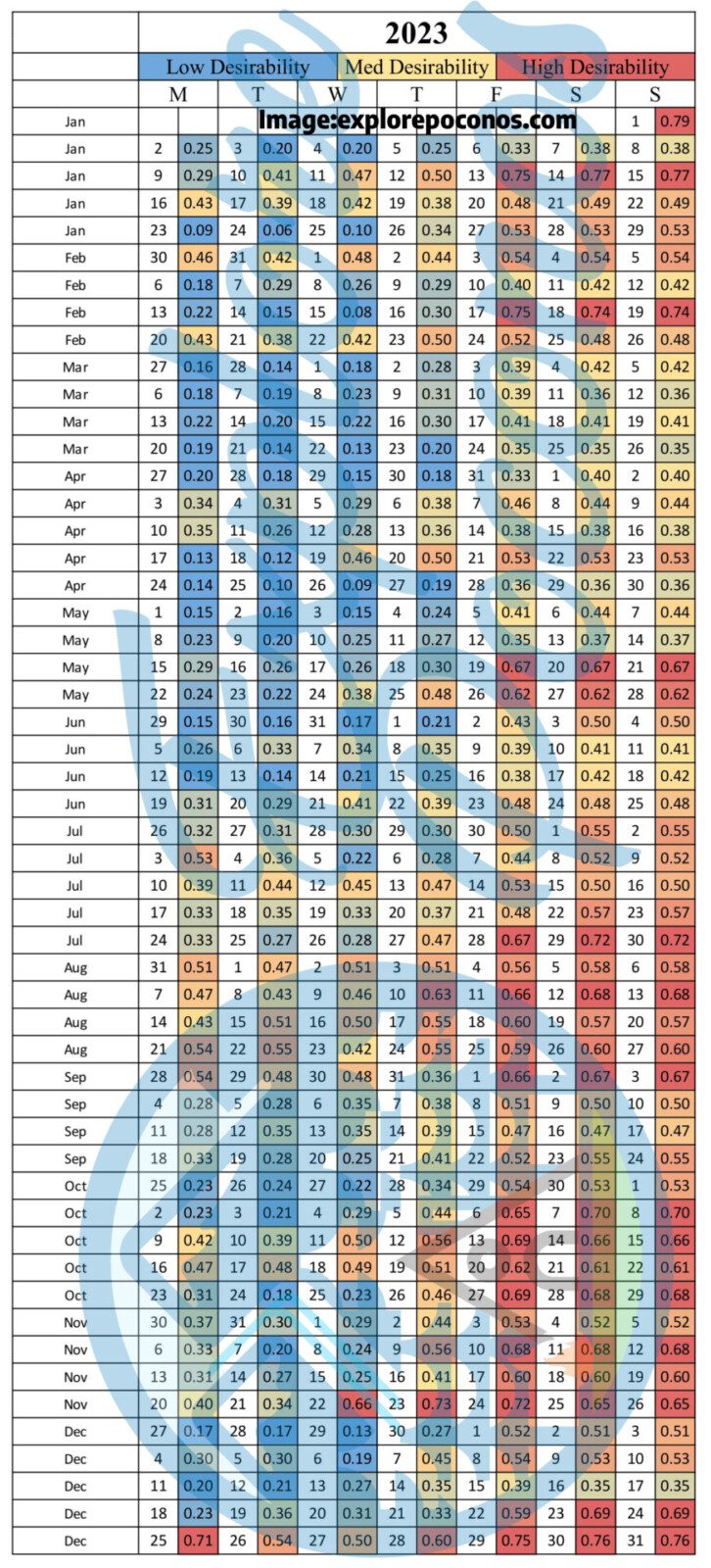Leveraging Data for Smarter Pricing: Part 2 of 3
In the first part of this series, we explored the foundational elements of our pricing strategy, including visibility, property-specific factors, and seasonality play a part in pricing. In this segment, we’ll dive deeper into how we leverage data to make smarter, more informed pricing decisions. By combining pricelabs, proprietary databases, real-time performance monitoring, and advanced forecasting tools, we’ve built a robust system that ensures our vacation rentals remain competitive and profitable.
The Role of PriceLabs in Our Strategy
To streamline our pricing process, we use PriceLabs, a dynamic pricing tool that helps us track market benchmarks and adjust rates in real time. However, PriceLabs is only as effective as the data it’s fed. Overestimating or underestimating inputs can lead to skewed pricing, which is why we continuously fine-tune the tool to reflect:
- Property Maturity: A listing that’s 30 days old won’t perform at the same level as one that’s been active for six months. As a property gains traction, its pricing strategy evolves.
- Booking Trends: Understanding how far in advance guests tend to book a particular property type helps us optimize pricing for different booking windows.
- Competitive Pricing: Adjustments are made based on seasonal demand, local competition, and occupancy rates.
- Nightly Stay Minimums: Use of nightly minimums strategically. For desirable dates far off, we set a 3- or 4-night minimum. As dates approach, we adjust based on demand to maximize bookings.
Beyond PriceLabs: Our Proprietary Database
While PriceLabs is an invaluable tool for dynamic pricing, it’s only one piece of the puzzle. Over the past five years, we’ve built a master proprietary database that tracks actual booking data from over 60 properties, encompassing more than 5,000 stays. This comprehensive dataset allows us to evaluate every aspect of a property’s performance, identify trends, and make data-driven decisions.
Here’s a closer look at what we analyze:
- Historical Desirability of Specific Dates: By examining past booking patterns, we can predict future demand for specific dates. For example, if a particular weekend in October consistently books out a year in advance, we know to adjust pricing accordingly.
- Average Daily Rate (ADR) by Property Type and Location: We track ADR across different property types (e.g., cabins, chalets, modern homes) and locations (e.g., near ski resorts or lakes). This helps us benchmark each property against similar listings.
- Lead Time: Knowing how far in advance guests typically book is essential. For example, the Poconos often attract last-minute trips, but key dates like New Year’s tend to get booked much further in advance.
- Occupancy Rates and Amenity Performance: We analyze occupancy rates and filter them by amenities like hot tubs, game rooms, or pet-friendliness. This helps us understand which features drive bookings and justify higher rates.
Heres an example of our Desirability Matrix for the Year of 2023.

Real-Time Performance Monitoring: The Leaderboard
One of our most powerful tools is the “Leaderboard,” a real-time tracking system that monitors which properties are getting booked, how far in advance, for what price, and for how long. We evaluate performance over multiple timeframes: the last 24 hours, 7 days, 14 days, 30 days, 45 days, 60 days, and 90 days.
How the Leaderboard Helps Us:
- Identify High-Performing Listings: If a property is consistently booking at higher rates than comparable listings, we can adjust its pricing parameters to maximize revenue.
- Spot Underperforming Properties: If a house is lagging behind in bookings, we can investigate why—whether it’s due to pricing, visibility, or other factors—and make strategic adjustments.
- Fine-Tune PriceLabs Settings: By comparing similar properties, we can ensure that PriceLabs is calibrated to reflect current market conditions.
A small section of our leaderboard:

Tracking Market Pacing: Year-Over-Year Comparisons
Another essential tool in our arsenal is the Pacing Chart, which allows us to compare booking performance year-over-year. This tool is particularly useful for identifying trends and adjusting pricing in real time.
Key Features of the Pacing Chart:
- Demand Tracking: We can see how demand for specific timeframes (e.g., holiday weekends, ski season) is trending compared to previous years. For example, if bookings for Christmas are pacing 20% ahead of last year, we can increase rates to capitalize on the higher demand.
- Price Trend Analysis: By comparing average price trends across seasons, we can identify opportunities to optimize pricing. For instance, if summer rates have been steadily increasing year-over-year, we can adjust pricing earlier in the season to capture more revenue.
- Proactive Adjustments: Monitoring pacing helps us stay ahead of the curve. If demand for a particular period is slowing down, we can lower prices to attract bookings rather than waiting until it’s too late.
Custom-Built Projection Tool: Forecasting Future Earnings
To take our data analysis to the next level, we’ve developed a custom-built projection tool that allows us to isolate individual properties and forecast future earnings. This tool uses historical and current data from the property in question, as well as comparable properties, to generate accurate revenue projections.
How It Works:
- Data-Driven Forecasts: The more data we have for a property, the more accurate the projection. For properties we’ve managed for several years, the tool’s forecasts are typically within 2% of actual results.
- Scenario Analysis: We can simulate different scenarios, such as adjusting pricing, adding amenities, or targeting specific guest demographics, to see how they impact revenue.
- Strategic Planning: By forecasting earnings, we can make informed decisions about property upgrades, marketing strategies, and pricing adjustments.
Putting It All Together: A Data-Driven Pricing Strategy
By combining insights from our proprietary database, real-time performance monitoring, pacing charts, and custom projection tools, we’ve created a pricing strategy that is both dynamic and precise. Here’s how it works in practice:
- Analyze Historical Data: We start by reviewing historical booking patterns, ADR, and occupancy rates to establish a baseline for each property.
- Monitor Real-Time Performance: Using the Leaderboard, we track how properties are performing in real-time and make adjustments as needed.
- Compare Year-Over-Year Trends: The Pacing Chart helps us identify demand trends and adjust pricing proactively.
- Forecast Future Earnings: Our projection tool allows us to simulate different scenarios and optimize pricing for maximum revenue.
Conclusion
Our data-driven approach to pricing has transformed the way we manage our vacation rentals, ensuring that each property remains competitive and profitable. By leveraging tools like PriceLabs, our proprietary database, real-time performance monitoring, and custom forecasting models, we can make informed decisions that maximize revenue while maintaining strong occupancy rates.
The combination of historical data analysis, real-time insights, and proactive adjustments allows us to stay ahead of market trends and continuously refine our pricing strategy. This level of precision not only benefits property owners by optimizing revenue but also enhances the guest experience by offering fair and competitive pricing. In part 3, we review common miscalculations that owners make.

